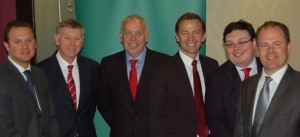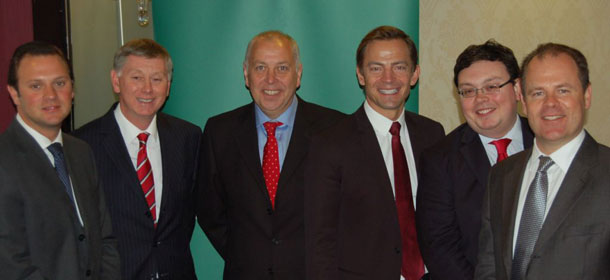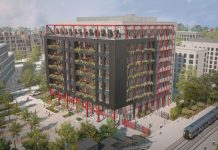 The impact of the economy and the knock on effect this has on the commercial property market was examined at CBRE’s annual breakfast property update in Bristol.
The impact of the economy and the knock on effect this has on the commercial property market was examined at CBRE’s annual breakfast property update in Bristol.
Attended by over 125 senior representatives, from major local businesses, banks, solicitors and accountants to investors, developers and architects, the increasingly popular event examined how changes to one sector of the market often impacts on another.
Andrew Marston, UK Regional Research Director, provided a national overview. He looked at the effect of the current spending patterns on the economy, noting that with inflation falling away household spending, which accounts for half of all spending, should start to rise and thereby improve the economy over the next two years.
A theme that continues from last year is the gap between prime and secondary office accommodation both in terms of yields and availability. Andrew said: “The gap between prime and secondary yields is one of the widest we have ever seen, while the increased availability of secondary accommodation is causing owners to consider alterative uses for the properties.”
Looking forward Andrew said: “While all sectors will see rental growth, offices are likely to see higher growth than either retail or industrial. In addition, the expectation is that prime office rents will rise by nearly 2.0% per year for the next five years, although the next 12 to 18 months will continue to be challenging.”
Andy Sayner, Head of South West Investment, talked about the investment market, noting that this year was considerably quieter than last year which saw a record £240 million invested in the city, much of this by foreign investors. Andy said: “Our expectation is that by the end of the year yields will be around 6.5%. However, we will continue to see a focus on prime properties which means that the sale of secondary offices will be challenging and therefore values of these will fall.”
An overview of the office market was provided by Philip Morton, Senior Director Agency and Development. He too focused on the impact of the economy on the office market commenting on how incentives were changing dramatically to help secure deals.
Philip made a number of predictions. He said: “City centre banks and financial institutions will continue to lead the way for office requirements. In addition, incentives for Grade A property will start to come in while headline rents will hold, although speculative development is unlikely until 2013.”
Of the out of town market, Philip said: “The Science Park will lead the south west in terms of take up while the development plans at Filton Airport will substantially increase supply of all types of property.”
An overview of the retail sector was provided for the first time by Richard Moore, Director, who talked about a mixed picture. He said: “While some retail names have disappeared forever from the retail market, food stores, particularly convenience and value driven stores, have grown rapidly.”
He added: “There are opportunities out there for the retail sector but they need to ensure they have a strong identity and offer. Those stuck in the middle will struggle. Retail locations also need to look good to attract custom as the trend is for fewer but larger shopping locations.”
Finally James Broome, Director Residential Development, spoke about the residential and development market observing that in the next year the market is likely to remain largely stable, both in terms of prices and in the level of transactions, but that positive growth is expected for the next three years after that. He also picked up on the potential for office to residential conversions and said: “The growing availability of secondary office space is creating a huge opportunity for the residential market.”



















